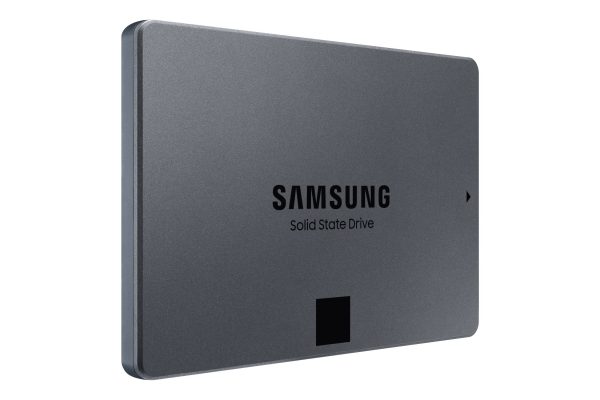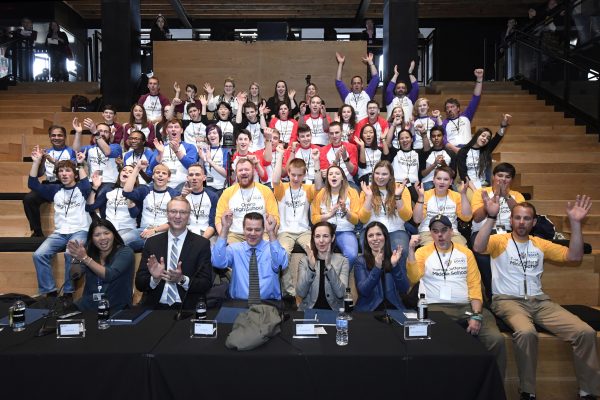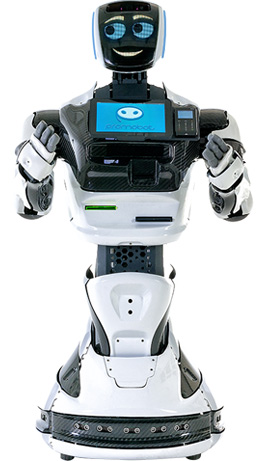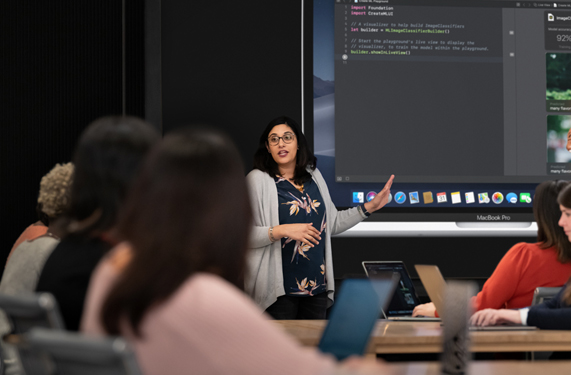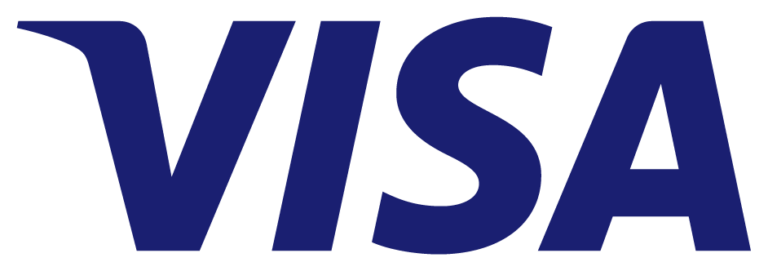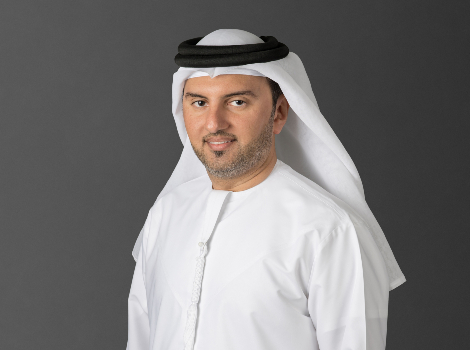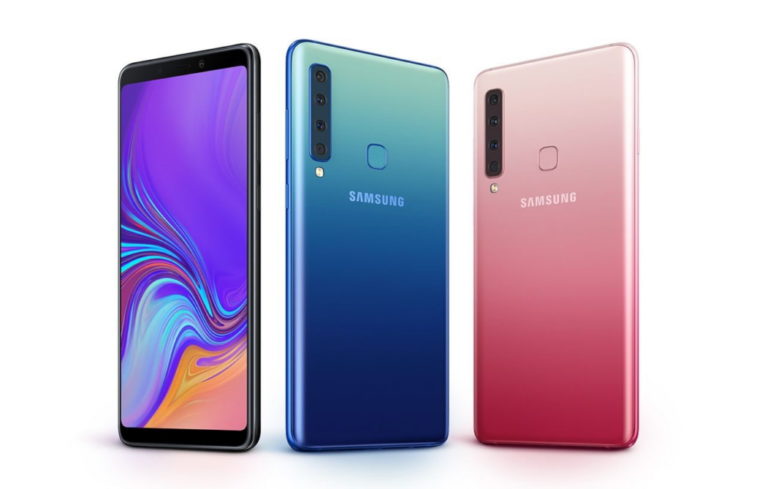| Product | Size (mm) | Light Color | PPF** (μmol/s) | PE*** (μmol/J) | ||
|---|---|---|---|---|---|---|
| Package | Mid-power (65mA, 25 ℃ ) | LM301H | 3.0 x 3.0 | White | 0.54 | 3.03 |
| LM561H | 5.6 x 3.0 | White | 0.5 | 2.88 | ||
| High-power (350mA, 25 ℃ ) | LH351H | 3.5 x 3.5 | White | 2.52 | 2.56 | |
| Blue (450nm) | 2.8 | 2.8 | ||||
| Deep Red (660nm) | 2.32 | 3.16 | ||||
| Far Red (730nm) | 0.22 | 0.33 | ||||
| Module | Horticulture LED Module | 281.0 x 41.0 | White | 70.9 | 2.74 | |
| (1.2A, 25 ℃ ) | 561.0 x 41.0 | White | 141.8 | 2.74 | ||
Samsung Electronics Expands Horticulture LED Lineups to Advance Greenhouse and Vertical Farming
Samsung Electronics Brings Multi-terabyte Storage Capacities at Accessible Price with 860 QVO SSD
Key Specifications
| Category | Samsung 860 QVO |
|---|---|
| Interface | SATA 6 Gbps |
| Form Factor | 2.5-inch |
| Storage Memory | Samsung V-NAND 4-bit MLC |
| Controller | Samsung MJX Controller |
| DRAM | 4GB LPDDR4 for 4TB |
| 2GB LPDDR4 for 2TB | |
| 1GB LPDDR4 for 1TB | |
| Capacity | 4TB, 2TB, 1TB[1] |
| Sequential Read/Write Speed | Up to 550/520 MB/s |
| Random Read/Write Speed | Up to 97K/89K IOPS |
| Management Software | Magician Software for SSD management |
| Total Bytes Written | 1,440TB (4TB) |
| 720TB (2TB) | |
| 360TB (1TB) | |
| Warranty | Three (3) Year Limited Warranty[2] |
[1] Performances may vary depending on SSD’s firmware version and system hardware & configuration. The sequential write performances were measured with Intelligent TurboWrite technology being activated. The sequential write performances may not be sustained for the portion of data exceeding over Intelligent TurboWrite buffer size. Sequential performance measurements are based on CrystalDiskMark v. 5.0.2. Random performances are measured with Intelligent TurboWrite technology being activated. Random performances may not be sustained for the portion of data exceeding over Intelligent TurboWrite buffer size. Random performance measurements are based on IOmeter1.1.0.
* Test system configuration: Intel® Core i7-4790k CPU@4GHz, DDR3 1600MHz 8GB, OS-Windows 7 Ultimate 64bit, Chipset-ASUS-Z97-PRO
[2] The IntelligentTurboWrite technology adjusts the buffer size to optimal levels within the usable disk space; up to 42GB for 1TB model and up to 78GB for 2TB and 4TB models. For more information on TurboWrite, please visit www.samsungssd.com.
[3] 3 years or TBW, whichever comes first. For more information on warranty, please find the enclosed warranty statement in the package
[4] 1GB=1,000,000,000 bytes by IDEMA. A certain portion of capacity may be used for system file and maintenance use, so the actual capacity may differ from what is indicated on the product label.
[5] Samsung Electronics shall not be liable for any loss, including but not limited to loss of data or other information contained on Samsung Electronics product or loss of profit or revenue which may be incurred by user. For more information on the warranty, please visit www.samsung.com/ssd.
Samsung Names 250 Classrooms as State Finalists in $2 Million* National STEM Contest
Teachers at each of the state finalist schools will submit lesson plans detailing how the proposed STEM project will address the identified community issue. The contest will then run in the following phases:
- 50 state winners will advance to the next phase of the contest and receive $20,000 in technology and supplies, as well as a video kit to help showcase their project in action.
- 10 national finalists will be selected to travel to the National Finalist Pitch Event in the spring to present their project to a panel of judges. For achieving national finalist status, seven of these schools will receive a $50,000 Samsung technology package while the remaining three will be named national grand prize winners.
- The three national grand prize winners will receive $100,000 in classroom technology and supplies.
- The general public will elect one Community Choice winner from the pool of national finalists who will be eligible to win an additional $10,000 in Samsung technology.
Amazon Web Services Announces 13 New Machine Learning Services and Capabilities
- New Amazon Elastic Compute Cloud (EC2) GPU instances (available next week): With eight NVIDIA V100 GPUs, 32GB GPU memory, fast NVMe storage, 96 Intel Xeon Scalable processors vCPUs, and 100Gbps networking, the new P3dn.24xl instances are the most powerful machine learning training processors available in the cloud, allowing developers to train models with more data in less time.
- AWS-Optimized TensorFlow framework (generally available today): When training with large amounts of data, developers who choose to use TensorFlow have found that it’s challenging to scale TensorFlow across many GPUs, which often results in low utilization of these GPUs and longer training times for large training jobs. AWS worked on this problem and has innovated on how to make TensorFlow scale across GPUs. By improving the way in which TensorFlow distributes training tasks across those GPUs, the new AWS-Optimized TensorFlow achieves close to linear scalability when training multiple types of neural networks (90 percent efficiency across 256 GPUs, compared to the prior norm of 65 percent). Using the new AWS-Optimized TensorFlow and P3dn instances, developers can now train the popular ResNet-50 model in only 14 minutes, the fastest time recorded, and 50 percent faster than the previous best time. And, these optimizations are generally applicable not just for computer vision models but also for a broader set of deep learning models.
- Amazon Elastic Inference (generally available today): While training rightfully receives a lot of attention, inference actually accounts for the majority of the cost and complexity for running machine learning in production (for every dollar spent on training, nine are spent on inference). Amazon Elastic Inference allows developers to dramatically decrease inference costs with up to 75 percent savings when compared to the cost of using a dedicated GPU instance. Instead of running on a whole Amazon EC2 P2 or P3 instance with relatively low utilization, developers can run on a smaller, general-purpose Amazon EC2 instance and provision just the right amount of GPU performance from Amazon Elastic Inference. Starting at just 1 TFLOP, developers can elastically increase or decrease the amount of inference performance, and only pay for what they use. Elastic Inference supports all popular frameworks, and is integrated with Amazon SageMaker and the Amazon EC2 Deep Learning Amazon Machine Image (AMI). And, developers can start using Amazon Elastic Inference without making any changes to their existing models.
- AWS Inferentia (available in 2019): For larger workloads that consume entire GPUs or require lower latency, AWS announced a high performance machine learning inference chip, custom designed by AWS. AWS Inferentia provides hundreds of teraflops per chip and thousands of teraflops per Amazon EC2 instance for multiple frameworks (including TensorFlow, Apache MXNet, and PyTorch), and multiple data types (including INT-8 and mixed precision FP-16 and bfloat16).
- Amazon SageMaker Ground Truth (generally available today): The journey to build machine learning models requires developers to prepare their datasets for training their ML models. Before developers can select their algorithms, build their models, and deploy them to make predictions, human annotators manually review thousands of examples and add the labels required to train machine learning models. This process is time consuming and expensive. Amazon SageMaker Ground Truth makes it much easier for developers to label their data using human annotators through Mechanical Turk, third party vendors, or their own employees. Amazon SageMaker Ground Truth learns from these annotations in real time and can automatically apply labels to much of the remaining dataset, reducing the need for human review. Amazon SageMaker Ground Truth creates highly accurate training data sets, saves time and complexity, and reduces costs by up to up to 70 percent when compared to human annotation.
- AWS Marketplace for Machine Learning (generally available today): Machine learning is moving quickly, with new models and algorithms from academia and industry appearing virtually every week. Amazon SageMaker includes some of the most popular models and algorithms built-in, but to make sure developers continue to have access to the broadest set of capabilities, the new AWS Marketplace for Machine Learning includes over 150 algorithms and models (with more coming every day) that can be deployed directly to Amazon SageMaker. Developers can start using these immediately from SageMaker. Adding a listing to the Marketplace is completely self-service for developers who want to sell through AWS Marketplace.
- Amazon SageMaker RL (generally available today): In machine learning circles, there is a lot of buzz about reinforcement learning because it’s an exciting technology with a ton of potential. Reinforcement learning trains models, without large amounts of training data, and it’s broadly useful when the reward function of a desired outcome is known but the path to achieving it is not and requires a lot of iteration to discover. Healthcare treatments, optimizing manufacturing supply chains, and solving gaming challenges are a few of the areas that reinforcement learning can help address. However, reinforcement learning has a steep learning curve and many moving parts, which effectively puts it out of the reach of all but the most well-funded and technical organizations. Amazon SageMaker RL, the cloud’s first managed reinforcement learning service, allows any developer to build, train, and deploy with reinforcement learning through managed reinforcement learning algorithms, support for multiple frameworks (including Intel Reinforcement Learning Coach.and Ray RL), multiple simulation environments (including SimuLink and MatLab), and integration with AWS RoboMaker, AWS’s new robotics service, which provides a simulation platform that integrates well with SageMaker RL.
- AWS DeepRacer (available for pre-order today): In just a few lines of code, developers can start learning about reinforcement learning with AWS DeepRacer, a 1/18th scale fully autonomous race car. The car (with all-wheel drive, monster truck tires, an HD video camera, and on-board compute) is driven using reinforcement learning models trained using Amazon SageMaker. Developers can put their skills to the test and race their cars and models against other developers for prizes and glory in the DeepRacer League, the world’s first global autonomous racing league, open to everyone.
- Amazon SageMaker Neo (generally available today): The new deep learning model compiler lets customers train models once, and run them anywhere with up to 2X improvement in performance. Applications running on connected devices at the edge are particularly sensitive to performance of machine learning models. They require low latency decisions, and are often deployed across a broad number of different hardware platforms. Amazon SageMaker Neo compiles models for specific hardware platforms, optimizing their performance automatically, allowing them to run at up to twice the performance, without any loss in accuracy. As a result, developers no longer need to spend time hand tuning their trained models for each and every hardware platform (saving time and expense). SageMaker Neo supports hardware platforms from NVIDIA, Intel, Xilinx, Cadence, and Arm, and popular frameworks such as TensorFlow, Apache MXNet, and PyTorch. AWS will also make Neo available as an open source project.
- Amazon Textract (available in preview today): Many companies today extract data from documents and forms through manual data entry which is slow and expensive, or using simple optical character recognition (OCR) software, which is often inaccurate and typically produces output that requires extensive post-processing to put the extracted content in a format that is usable by a developer’s application. Amazon Textract uses machine learning to instantly read virtually any type of document to accurately extract text and data without the need for any manual review or custom code. Amazon Textract allows developers to quickly automate document workflows, processing millions of document pages in a few hours.
Robots and Humans to Work Together at HITEC® Dubai 2018
Frank Wolfe CAE, CEO of HFTP, said, “Hospitality robots are clearly at a tipping point. They’re now cost-effective to build, are attaining cultural acceptance, and use sophisticated technology to safely live and work among us. We are delighted to have a robot leading the conference at HITEC Dubai.”
Mr. Amro Kamel, the group owner stated, “We took the lead in understanding the need of introducing the essence of Robotic Technology in the region. Today we are the largest distributor of PROMOBOT, TECHMETICS, LEA and are delighted to showcase our latest products at the HITEC Dubai.”
A report released by McKinsey & Company recently suggested that by 2030, as many as 800 million workers globally could be replaced by robots. Even if automation adoption is slower than anticipated, as many as 400 million people could still be affected. However, according to World Economic Forum (WEF), robots in workplace could create double the jobs they destroy. It said about 133 million jobs could be created worldwide with the help of rapid technological advances in the workplace over the next decade, compared with 75 million that could be displaced.
HITEC Dubai’s Advisory Council Chairperson Laurent A. Voivenel, Senior Vice President, Operations and Development for the Middle East, Africa and India for Swiss-Belhotel International, said, “Over the last decade technology has led to drastic transformation in the hospitality sector globally as well as regionally which has boosted competitiveness and efficiency in our industry while creating new opportunities. There’s no denying that robots are becoming common helpers in hospitality, showing up in hotels and restaurants around the world – from Japan’s all-robot hotel to other parts of the globe. It a growing trend and extremely useful in certain areas and we are excited to see the new developments in the field at HITEC.”
HITEC Dubai will be inaugurated by Dubai Tourism and will give Middle East buyers, currently worth over USD 75 billion, access to the world’s leading technology solution providers and experts in the hospitality sector. The two-day trade show is co-produced by Hospitality Financial and Technology Professionals (HFTP®) and Naseba.
For more information or to register for HITEC Dubai 2018 visit https://www.hitec-dubai.com/ Call Amir Abdin on +971 44 55 7920 or Rouf Hyder Beigh +971 44 55 79 32
ABOUT HFTP Hospitality Financial and Technology Professionals (HFTP) is a global non-profit hospitality association, headquartered in Austin, Texas, USA, that uniquely understands the industry’s problems. HFTP has members and stakeholders across the globe. HFTP assists its members in finding solutions to industry problems more efficiently than any organization via its expert networks, research, conferences such as HITEC and certification programs. HFTP also owns the world’s only hospitality specific search engine, PineappleSearch.com. HFTP is recognized as the spokes group for the finance and technology segment of the hospitality industry.
ABOUT NASEBA Naseba offers global business facilitation services. The company creates growth opportunities by bringing together people, partners and ideas. It helps clients raise capital, enter new markets, secure partners, close sales and educate workforces. Naseba’s goal is to create opportunity and add economic value at every stage of its client’s journey. It does this through three key areas: investor services, commercial services and leadership services. Since inception in 2002, Naseba has facilitated deals totalling billions of dollars for its clients. The company has connected over 100,000 global executives through more than 1,000 proprietary business platforms and is an expert in growth markets.
About Dubai’s Department of Tourism and Commerce Marketing (Dubai Tourism) With the ultimate vision of positioning Dubai as the world’s leading tourism destination and commercial hub, Dubai Tourism’s mission is to increase the awareness of Dubai among global audiences and to attract tourists and inward investment into the emirate. Dubai Tourism is the principal authority for the planning, supervision, development and marketing of Dubai’s tourism sector. It markets and promotes the Emirate’s commerce sector, and is responsible for the licensing and classification of all tourism services, including hotels, tour operators and travel agents. Brands and departments within the Dubai Tourism portfolio include Dubai Business Events, Dubai Calendar, and Dubai Festivals and Retail Establishment.
For media contact: Hina Bakht Managing Director EVOPS Marketing & PR Mob: 00971 50 6975146 Tel: 00971 4 566 7355 Hina.bakht@evops-pr.com www.evops-pr.com
Apple launches app development program to support women entrepreneurs
New Entrepreneur Camp Offers Immersive Technology Lab and More for Female App Developers who are Founders and Entrepreneurs
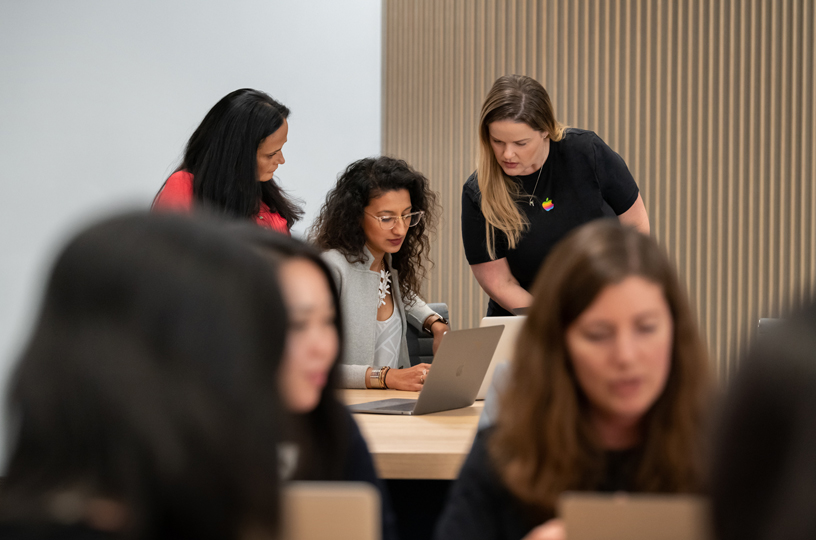
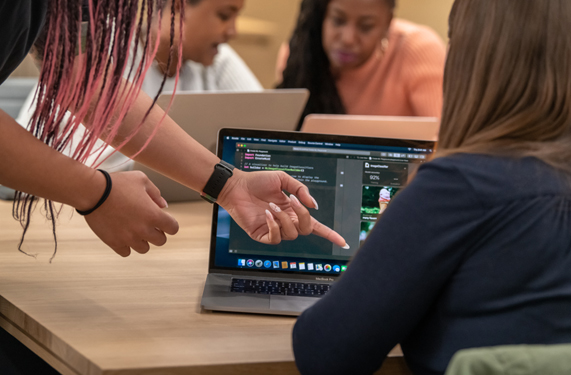
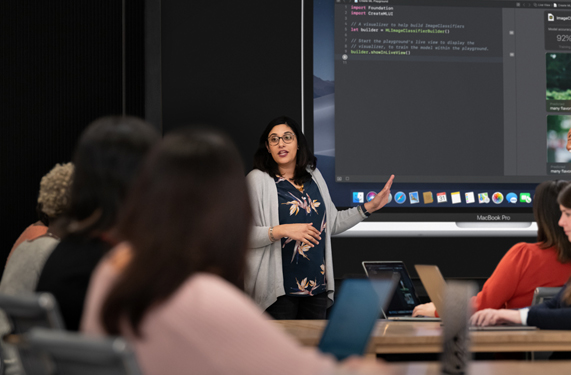
Visa Inc. to Participate in Upcoming Investor Conference
nol card now valid to pay for purchases at Lulu Outlets
Users of nol cards issued by Dubai’s Roads and Transport Authority (RTA) can now use their cards to pay for purchases at all retail outlets of Lulu. The procedure has been enabled through MercuryPay platform; which is one of the leading firms in this field.
This service is شvailable at all Lulu retail outlets in Dubai and Sharjah. nol cardholders can use their cards in payment for light and quick purchases at these outlets; which are compatible with the Points of Sale of the payment platform, over and above their use in mobility purposes.
“This initiative is an important step towards realising RTA’s objective of bringing happiness to nol card holders in Dubai through offering them diversified use for their cards. The initiative is compatible with the Smart City initiative of Dubai Government by developing advanced technologies that enable people to benefit from the diverse package of services they use on a daily basis,” said Khaled Al Awadi, Director of Automated Fare Collection Systems at RTA’s Corporate Technology Support Services Sector, RTA.
“Enabling different spectrums of the community to use their nol cards in paying for their purchases is in line with RTA’s third strategic goals (People Happiness). The RTA is making every effort to explore the best means of boosting the happiness of UAE residences, be it citizens, residents, tourists or visitors,” noted Al Awadi.
For his part, Ashraf Ali MA, Executive Director of Lulu Group said “we are delighted to join hands with RTA in this great initiative, which is sure to make shopping at Lulu a more convenient and easy experience for the large population of Dubai & Sharjah who are already using the nol cards for many other services.”
The UAE Government is adopting a strategy aimed at building smart cities to lay the foundation for a better future to the benefit of all people. Such a strategy involves empowering people and enabling them to achieve optimal happiness. It is therefore imperative to develop smart and innovative solutions, such as the use of nol cards in payment for purchases in various outlets. The process contributes to providing more flexible and faster payment methods.
Developers Discuss a “New DNA” for the Galaxy A Series

(From left) Minseung Baik, Kwangsub Bong, and Sunmoek Jung of the Global Product Planning Group
 “The motivations for the new product came from the behavior of millennials who like to use social networking services, vlogs and other multimedia systems for communication,” Jung continued. With usage patterns showing that smartphone cameras were mostly being used by millennials for taking selfies, traveling and nightlife, the team designed multiple cameras for both the Galaxy A7 and Galaxy A9 to provide users with more options when they are taking snapshots – which, in other words, gives the younger generation an even wider variety of ways to express themselves through different types of photos. The new multiple cameras are all part of a new philosophy that seeks to bring truly unique features to the devices.
“The triple and quad cameras in the new Galaxy A7 and Galaxy A9 show our determination to implant innovative DNA in the Galaxy A series and deviate from the shadow of the flagship series,” explained Baik. “We didn’t want to sit around and wait for the smartphone market to evolve. We wanted to innovate with the Galaxy A series and I believe we have accomplished that. As we develop the product line, we will continue to differentiate it from the flagship series by creating its own core strengths and unique features.”
Common to both camera setups on the Galaxy A7 and Galaxy A9 are a Depth camera and an Ultra Wide camera alongside the main camera. The Depth camera measures the depth of the image taken, allowing users to add a bokeh effect around their subject with Live Focus, while the Ultra Wide camera provides a 120° field of view, so users can capture the entire scene. The Galaxy A9 includes an added 10MP Telephoto lens with 2x Optical Zoom so that users can get up-close and personal with their subject, even when they are far away. Engineering all of those features to fit into one phone meant taking a whole new approach to the design.
“We had to use the space more efficiently if we wanted to mount more cameras,” explained Bong. “Taking into consideration the battery and other numerous key components, we decided to move the cameras on the side of the device in a single vertical row, a rather bold approach since cameras have been in the center on our flagship smartphones.”
“The motivations for the new product came from the behavior of millennials who like to use social networking services, vlogs and other multimedia systems for communication,” Jung continued. With usage patterns showing that smartphone cameras were mostly being used by millennials for taking selfies, traveling and nightlife, the team designed multiple cameras for both the Galaxy A7 and Galaxy A9 to provide users with more options when they are taking snapshots – which, in other words, gives the younger generation an even wider variety of ways to express themselves through different types of photos. The new multiple cameras are all part of a new philosophy that seeks to bring truly unique features to the devices.
“The triple and quad cameras in the new Galaxy A7 and Galaxy A9 show our determination to implant innovative DNA in the Galaxy A series and deviate from the shadow of the flagship series,” explained Baik. “We didn’t want to sit around and wait for the smartphone market to evolve. We wanted to innovate with the Galaxy A series and I believe we have accomplished that. As we develop the product line, we will continue to differentiate it from the flagship series by creating its own core strengths and unique features.”
Common to both camera setups on the Galaxy A7 and Galaxy A9 are a Depth camera and an Ultra Wide camera alongside the main camera. The Depth camera measures the depth of the image taken, allowing users to add a bokeh effect around their subject with Live Focus, while the Ultra Wide camera provides a 120° field of view, so users can capture the entire scene. The Galaxy A9 includes an added 10MP Telephoto lens with 2x Optical Zoom so that users can get up-close and personal with their subject, even when they are far away. Engineering all of those features to fit into one phone meant taking a whole new approach to the design.
“We had to use the space more efficiently if we wanted to mount more cameras,” explained Bong. “Taking into consideration the battery and other numerous key components, we decided to move the cameras on the side of the device in a single vertical row, a rather bold approach since cameras have been in the center on our flagship smartphones.”
 He added, “We knew that design is one of the core elements that young millennials focus on when buying their phones,” pointing to the new gradient-style coloring of the devices. “So we wanted to showcase a new design in order to target young millennials better.”
The new Galaxy A9 devices come in a range of colors, including two unique gradient options in Lemonade Blue and Bubblegum Pink. The gradient design was a feat of engineering in its own right, requiring trial and error to get the right look.
“We selected 3D glass material to emphasize the gradation effect and used glossy metal on the borders of the device to give it a nice shine,” said Bong. “For the Bubblegum Pink version, even the metal borders have the color gradation, making it look much prettier and polished.”
The result of these efforts is a smartphone designed for millennials who want a stylish and convenient mobile experience that brings the best of the Galaxy design heritage to suit their modern, busy lifestyles. With this new approach in mind, the Galaxy A series will continue to evolve to meet the needs of millennials and like-minded individuals in the future.
“The Galaxy A series is Samsung Electronics’ new flagship device that proves our innovation in mobile technology and the deep understanding of our customers and the market,” said Jung. “Thanks to the unique style and features, the Galaxy A7 and A9 have drawn immediate attention from a wider range of consumers and the industry. Samsung will continue to explore the evolving and increasing needs of our consumers to provide the next Galaxy A series with improved features and new experiences.”
He added, “We knew that design is one of the core elements that young millennials focus on when buying their phones,” pointing to the new gradient-style coloring of the devices. “So we wanted to showcase a new design in order to target young millennials better.”
The new Galaxy A9 devices come in a range of colors, including two unique gradient options in Lemonade Blue and Bubblegum Pink. The gradient design was a feat of engineering in its own right, requiring trial and error to get the right look.
“We selected 3D glass material to emphasize the gradation effect and used glossy metal on the borders of the device to give it a nice shine,” said Bong. “For the Bubblegum Pink version, even the metal borders have the color gradation, making it look much prettier and polished.”
The result of these efforts is a smartphone designed for millennials who want a stylish and convenient mobile experience that brings the best of the Galaxy design heritage to suit their modern, busy lifestyles. With this new approach in mind, the Galaxy A series will continue to evolve to meet the needs of millennials and like-minded individuals in the future.
“The Galaxy A series is Samsung Electronics’ new flagship device that proves our innovation in mobile technology and the deep understanding of our customers and the market,” said Jung. “Thanks to the unique style and features, the Galaxy A7 and A9 have drawn immediate attention from a wider range of consumers and the industry. Samsung will continue to explore the evolving and increasing needs of our consumers to provide the next Galaxy A series with improved features and new experiences.” 

